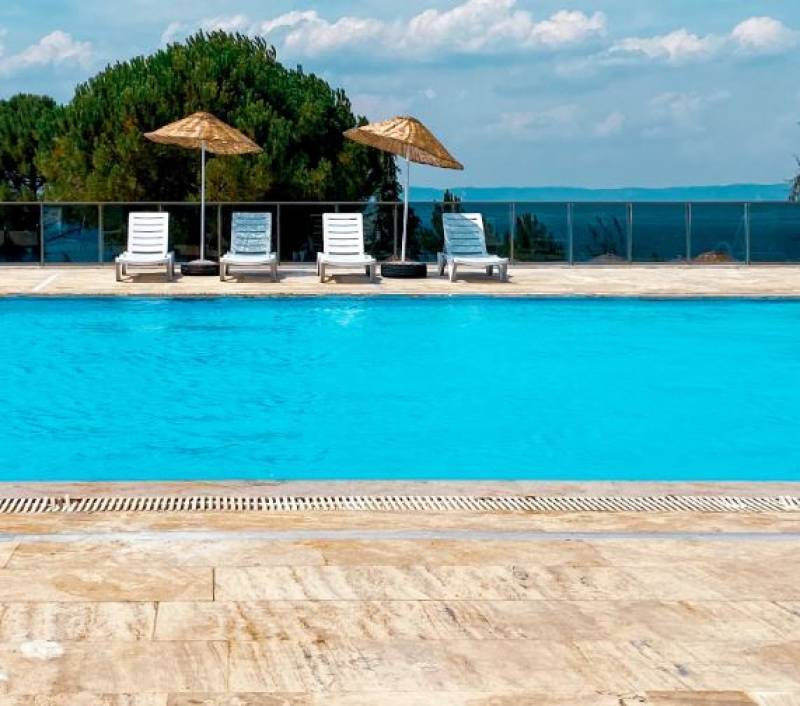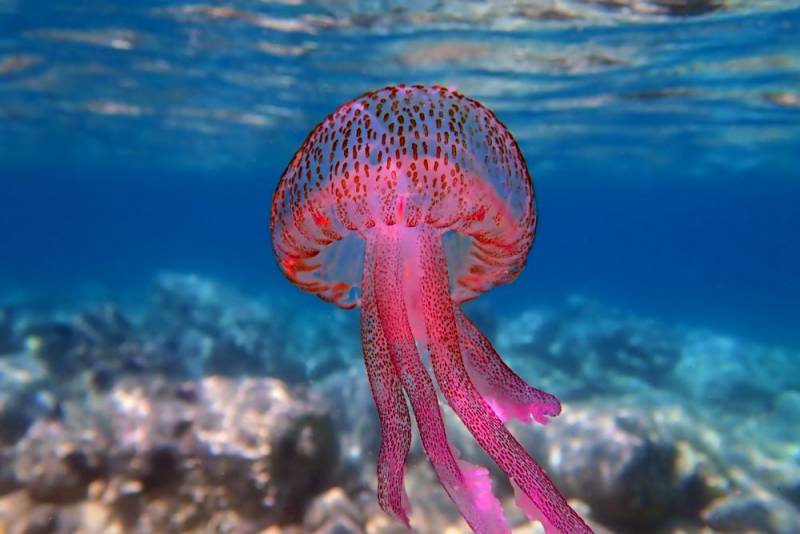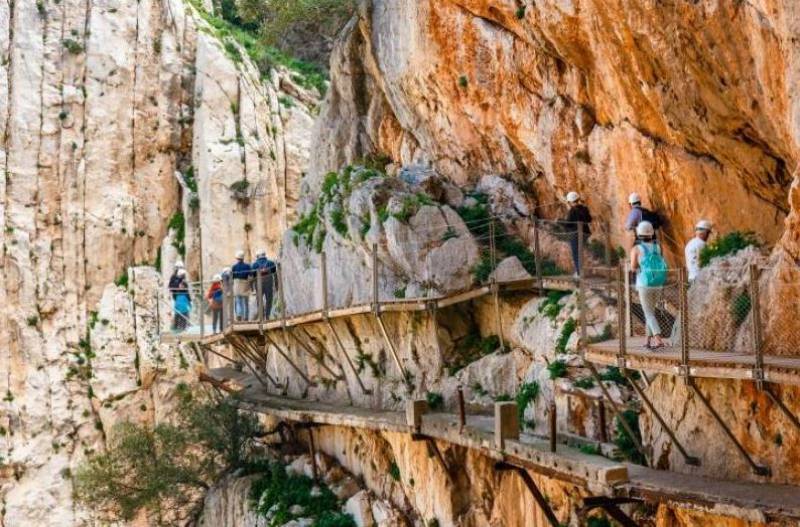- Region
- Águilas
- Alhama de Murcia
- Jumilla
- Lorca
- Los Alcázares
- Mazarrón
- San Javier
-
ALL AREAS & TOWNS
- AREAS
- SOUTH WEST
- MAR MENOR
- MURCIA CITY & CENTRAL
- NORTH & NORTH WEST
- TOWNS
- Abanilla
- Abarán
- Aguilas
- Alamillo
- Alcantarilla
- Aledo
- Alhama de Murcia
- Archena
- Balsicas
- Blanca
- Bolnuevo
- Bullas
- Cañadas del Romero
- Cabo de Palos
- Calasparra
- Camping Bolnuevo
- Campo De Ricote
- Camposol
- Canada De La Lena
- Caravaca de la Cruz
- Cartagena
- Cehegin
- Ceuti
- Cieza
- Condado de Alhama
- Corvera
- Costa Cálida
- Cuevas De Almanzora
- Cuevas de Reyllo
- El Carmoli
- El Mojon
- El Molino (Puerto Lumbreras)
- El Pareton / Cantareros
- El Raso
- El Valle Golf Resort
- Fortuna
- Fuente Alamo
- Hacienda del Alamo Golf Resort
- Hacienda Riquelme Golf Resort
- Isla Plana
- Islas Menores & Mar de Cristal
- Jumilla
- La Azohia
- La Charca
- La Manga Club
- La Manga del Mar Menor
- La Pinilla
- La Puebla
- La Torre
- La Torre Golf Resort
- La Unión
- Las Palas
- Las Ramblas
- Las Ramblas Golf
- Las Torres de Cotillas
- Leiva
- Librilla
- Lo Pagan
- Lo Santiago
- Lorca
- Lorquí
- Los Alcázares
- Los Balcones
- Los Belones
- Los Canovas
- Los Nietos
- Los Perez (Tallante)
- Los Urrutias
- Los Ventorrillos
- Mar De Cristal
- Mar Menor
- Mar Menor Golf Resort
- Mazarrón
- Mazarrón Country Club
- Molina de Segura
- Moratalla
- Mula
- Murcia City
- Murcia Property
- Pareton
- Peraleja Golf Resort
- Perin
- Pilar de la Horadada
- Pinar de Campoverde
- Pinoso
- Playa Honda
- Playa Honda / Playa Paraíso
- Pliego
- Portmán
- Pozo Estrecho
- Puerto de Mazarrón
- Puerto Lumbreras
- Puntas De Calnegre
- Region of Murcia
- Ricote
- Roda Golf Resort
- Roldan
- Roldan and Lo Ferro
- San Javier
- San Pedro del Pinatar
- Santiago de la Ribera
- Sierra Espuña
- Sucina
- Tallante
- Terrazas de la Torre Golf Resort
- Torre Pacheco
- Totana
- What's On Weekly Bulletin
- Yecla


- EDITIONS:
 Spanish News Today
Spanish News Today
 Alicante Today
Alicante Today
 Andalucia Today
Andalucia Today
article_detail
Spanish News Today Editors Roundup Weekly Bulletin July 12

TOP STORIES: "Spain v England in the Euros final!" & "What Murcia is teaching the rest of Spain about dealing with water shortages"
You’ve got plans this weekend – whether you’re a football fan or not, you’ll be hard-pressed to avoid the final of the Euros this Sunday. That’s in the evening, but the Wimbledon Finals are also scheduled for Saturday (Women’s) and Sunday (Men’s), and the England cricket team are also in the middle of a Test series against the West Indies. It’s all going on!
All the rest of the time, you can feel free to hang around the pool or the beach – but bear in mind the rules you need to know at Spanish swimming pools and the kids of jellyfish you could find in the sea (more about both of these below).
Plus an interesting section explaining exactly why it is that, unlike other parts of Spain, Murcia has no water restrictions in place, despite having the worst drought situation in the country. Short answer: because Murcia is special! Long answer: read below.
We still believe…

Football will be coming home this Sunday. Only question is, where do you call home? Where do your loyalties lie?
Spain will take on England this Sunday July 14 in the final of the UEFA Euros 2024. It’s the match-up we’ve all been praying for, as English-speakers with strong links to Spain, and it’s bound to be a hectic, festive atmosphere on Sunday, whatever the outcome.
Spain reached the final by beating France 2-1 on Tuesday, with the highlight being a howler of a left-footer scored by 16-year-old wonder kid and UEFA Player of the Match, Lamine Yamal.
England secured their place in the final with a 2-1 win over the Netherlands on Wednesday. After going behind to a goal by Netherlands midfielder Simons in the 7th minute, Harry Kane was judged to have been fouled in the penalty area after a VAR review stepped up to net the ensuing penalty.
The game looked like it was destined for extra time until late substitute Oli Watkins put the ball between the Dutch defender’s legs and the outstretched hand of the Dutch goalkeeper to hit the corner of the net in the 91st minute.
It was only Watkins’ fourth touch of the ball in the whole match that sent England to the final and earned him Man of the Match!
For the estimated 400,000 Brits resident in Spain, not to mention all the non-residents and tourists who find themselves in Spain on this date, it is the dream final and has echoes of the 2023 Women’s World Cup, which was won by Spain.
The game is being played at 9pm Central European Time (8pm UK time and Canary Islands) and fans are wondering whether to watch at home in Spain on a UKTV deal, to go out to the local sports bar and feel the atmosphere.
Another option, if you feel brave enough, is to head down to one of the many Plazas around Spanish towns where enormous projector screens will be set up in the open air for people to watch as a group. Just know that you’ll likely surrounded by Spaniards in that case.
The Wimbledon Men’s Final is also being played on Sunday, just hours before the Euros final starts, and everyone’s favourite Spaniard and Murciano, Carlos Alcaraz, is through to the final once again. Let’s see if he can win for the second year in a row!
A big weekend for sport!
Murcia has the worst drought in Spain but no water restrictions. Why?

Despite recent rains, Spain’s south and east have experienced a drier than usual year, with drought severely impacting regions from Catalonia to Andalucía. Water restrictions have been imposed in numerous municipalities, affecting millions, and now it’s hotting up even more, with temperatures exceeding 40ºC in parts of southern Spain this July!
However, the Region of Murcia, one of Spain’s driest areas, remains an exception with no water restrictions planned for the summer, despite reservoirs being alarmingly low. Why is that? The explanation is deceptively simple.
Murcia, part of the Segura basin area, has water levels at about 20% capacity, a significant drop from last year's 35% and the decade's average of 42%. Other regions like Barcelona declared a state of emergency at 16% capacity, and Altea in Alicante has already banned pool filling. The difference for Murcia lies in its perpetual drought conditions, which have forced it to be ahead of the curve when it comes to preparations and infrastructure to manage water scarcity effectively.
Murcia’s arid conditions, with an average rainfall of only 300 millimetres per year and prolonged dry periods, have driven the region to develop robust water management systems. Unlike other areas, Murcia consistently faces extreme drought, requiring innovative solutions to maintain water supply, particularly for its significant fruit and vegetable agriculture industry.
Murcia has heavily invested in desalination and wastewater treatment plants, ensuring a continuous water supply despite low natural water levels. The region leads Spain in water regeneration and reuse, with over 90% of water being recycled in a closed loop, compared to a national average of just 8.1% and a European average of 5%.
Additionally, the agricultural sector employs advanced drip irrigation systems, used in 90% of plantations, significantly higher than the 16% national average, enhancing water efficiency.
While drought does affect Murcia, its early preparation and technological advancements set it apart as a model for effective water management. The focus on continuous innovation and investment, coupled with research into less water-intensive crops, underscores Murcia’s strategy for sustainable water use, and other regions could do well to emulate Murcia to better handle their drought conditions, which are only likely to get worse.
Rule the pool
 The summer is most definitely heating up in Spain this week and as the temperature rises, there’s nothing quite like taking a refreshing dip in one of the country’s many communal swimming pools.
The summer is most definitely heating up in Spain this week and as the temperature rises, there’s nothing quite like taking a refreshing dip in one of the country’s many communal swimming pools.Whether you’re a city dweller seeking refuge from the scorching temperatures or a parent watching your little ones splash and play under the watchful eye of lifeguards, Spain’s public pools offer something for everyone. However, before you take that plunge, it’s essential to familiarise yourself with the unwritten rules and regulations of poolside etiquette.
One of the most intriguing questions of the season revolves around topless sunbathing. Is it allowed or frowned upon? The answer lies in a maze of regulations. While there may be no explicit state law prohibiting it, the decision often rests with municipal ordinances and town councils.
In places like Catalonia, going topless is embraced, while other cities like Bilbao, Valencia and Sevilla have also joined the ranks, allowing sunbathers to work on that all-over tan. However, to avoid any awkward moments, it’s always best to check your local regulations before baring it all.
Now, let’s talk about some poolside fun. Inflatable mattresses, boogie boards and other pool toys are usually given the green light, as long as they help you stay afloat and don't interfere with the lifeguard's duties. That being said, many communal pools in urbanisations expressly prohibit inflatables like lilos and beach balls, so keep an eye out for signage if you don’t want to be told off.
When it comes to food, outside snacks are generally not permitted in public facilities. Pools often have snack bars where you can grab a bite, but remember to enjoy your treats in designated areas away from the grass or bathing areas.
As for smoking and drinking, Spain’s pools offer a laid-back vibe. You can light up and sip on your favourite beverage in the designated spots, whether it’s by the poolside or at the snack bar, but be sure to check the pool’s specific rules just in case.
Music is also a part of the poolside experience, but Spain is strict about any behaviour that might disturb others. While there may be no explicit volume limits, it’s essential to keep the peace and respect others’ tranquillity.
In Sevilla, for example, bathers are banned from playing songs at full volume, but they can enjoy music at a “considerate” level.
Well jell
If you tire of the pool, you might want to head to one of Spain’s fantastic beaches. However, it’s worth remembering that you share the water with a variety of jellyfish species which usually make themselves known in the summer months.
While most of these slippery creatures are more unpleasant than dangerous, a few can deliver a painful and even risky sting. To ensure a safe and enjoyable beach experience, it’s crucial to be aware of the different types of jellyfish you may encounter.
 Spain’s Ministry of Ecological Transition has identified and listed the 10 most common species of jellyfish found in Spanish waters, providing valuable information on their appearance, habitat and potential risks. Among these species, a few stand out for their distinct characteristics and the level of danger they pose.
Spain’s Ministry of Ecological Transition has identified and listed the 10 most common species of jellyfish found in Spanish waters, providing valuable information on their appearance, habitat and potential risks. Among these species, a few stand out for their distinct characteristics and the level of danger they pose.The fried egg jellyfish, also known as Aguacuajada, is easily recognisable by its central yellow protuberance resembling a yolk. Measuring between 20 and 35 centimetres, this jellyfish is a common sight in the Mediterranean, especially during summer and autumn. Thankfully, its danger rating is very low, with its sting causing mild skin irritation at most.
On the opposite end of the spectrum is the Mauve stinger or Luminous jellyfish (Pelagia noctiluca). With a diameter of up to 20 centimetres and tentacles flowing back more than 20 metres, this species is highly dangerous. Its sting can lead to skin irritation, open wounds and even respiratory and cardiovascular problems.
Another bell-shaped jellyfish, the Rhizostoma pulmo or Aguamala, can reach up to a metre in diameter and is often found in Mediterranean and Atlantic coastal areas during the summer. While its danger rating is fairly low, its sting can be quite painful, and you should exercise caution even without direct contact.
The Golden Aurelia, distinguished by its plate-like shape and scalloped arms, is a rare find along the coasts of Spain. Its sting is considered low-risk, causing only mild skin irritation.
One of the most concerning jellyfish on the list is the Compass jellyfish (Chrysaora hysoscella), characterised by its yellow and orange tones and long tentacles that can extend up to five metres. Found in both the Mediterranean and Atlantic, its sting causes initial itching and burning, followed by skin lesions and oedema.
This is one species you really don’t want to meet.
Perhaps the most notorious jellyfish on the list is the Portuguese Man o' War (Physalia physalis), which, despite its name, is not technically a jellyfish but a colony of polyps. Its bright blue and pink-violet colours are striking, but its thin, poisonous tentacles can exceed 20 metres in length.
An encounter with this species can result in neurogenic shock, making it one to avoid at all costs.
You can find a full list of the 10 species of jellyfish you’re most likely to encounter in Spanish waters here.
Murcia
 You wait a year for a Mar Menor ferry service and then two come along at once. No sooner had we brought you the news of the renewal of the Santiago de la Ribera-La Manga than the news dropped of the return of the ferry operating between Lo Pagán-La Puntica port in San Pedro del Pinatar and Puerto Menor in La Manga del Mar Menor.
You wait a year for a Mar Menor ferry service and then two come along at once. No sooner had we brought you the news of the renewal of the Santiago de la Ribera-La Manga than the news dropped of the return of the ferry operating between Lo Pagán-La Puntica port in San Pedro del Pinatar and Puerto Menor in La Manga del Mar Menor.The service, operated by two companies, features a classic wooden boat for 120 passengers and a taxi service for smaller groups, enabling visitors to discover the lagoon’s hidden gems, bathe in its waters, visit islands and even enjoy special night tours.
Even better, it’s not just for summer but will operate year-round, aiming to ‘de-seasonalise’ tourism in the Mar Menor, typically bustling in summer but quieter off-peak. As part of this plan, significant improvements are planned for the Lo Pagán marina, including a 76,000-euro project to ensure that travel between maritime and land transport is coordinated, enhancing accessibility and passenger experience.
Sticking in San Pedro del Pinatar, Spanish police have dismantled a British-led international arms trafficking ring. Anthony Patrick Finnigan, a 37-year-old from Liverpool, was arrested on suspicion of leading the gang. On the run since 2020 for drug-related charges in the UK, Finnigan was wanted for trafficking guns to finance cocaine purchases. The guns were intended for criminal groups in the Levante area of Spain.
After tracking Finnigan to a villa in San Pedro in mid-June, police staged an intensive surveillance operation. On June 20, a deal involving 35 pistols went awry in an underground garage in Los Alcázares. Police apprehended Finnigan and his British accomplice Topal, after a tense confrontation during which Topal grabbed a gun and hand-wrestled with officers, and shots were fired.
At the same time, two other suspects were arrested at the San Pedro villa, where a stash of guns and ammunition was found. Finnigan faces both charges in Spain and an extradition request to face charges in the UK.
Tragedy struck in Los Alcázares on July 9 when a British couple was hit by a drunk driver outside their hotel. The couple, aged 48 and 50, was crossing the road to get back to the Hotel Costa Narejos where they were staying when they were struck.
The driver, who fled but was quickly apprehended, was found to be over three times the legal alcohol limit and driving without a valid licence. They were both hospitalised, with the husband sadly dying from his injuries.
This incident occurred on the same day a 70-year-old woman died from a heart attack while swimming in the Mar Menor at Los Narejos. A very black day for the area.
In the Mar Menor, the absence of anti-jellyfish nets has been notable this summer, even though the authorities have stated they are ready to put them up at a moment’s notice, particularly in the northern basin where increased jellyfish reproduction may pose a problem.
However, they claim there is no immediate need. The current jellyfish concentration is highest in the centre of the lagoon, well away from common swimming areas. They may be increasing in number, and as soon as they are deemed to have floated close enough to the sure to be a nuisance, the nets will be put up.
Until such time, the Murcia government says they will not install the nets, as a way of minimising any ecological disruption.
What they will be doing is putting out to tender a 138.3-million-euro project for the latest section of high-speed rail track between Torre Pacheco and Cartagena that will bring the AVE to Murcia’s second city.
With this latest 9-kilometre stretch of rail (yes, you read that right – 138 million euros for 9 kilometres) Cartagena comes one (tiny) step to becoming connected by high-speed rail to Alicante, Madrid and the rest of Spain and Europe, but don’t hold your breath because it likely won’t be ready before the end of the decade.
At the Alhama Signature Golf Course on the Condado de Alhama Golf Resort, normalcy has returned after what can politely be termed a ‘period of turmoil’.
 Long story short, complaints about the condition of the course led to disputes between the managing company, Club de Golf Isla del Fraile, and the owners, Alhama Healthy Living S.L. At long last, the owners terminated the management contract but faced resistance during the takeover from the managing company, who were said to basically be trying to squeeze every last centimo out of the place that they could without watering the grass or doing any basic upkeep. When they were told to move it and lose it by the course owners, they apparently threatened them, which is when the Guardia Civil was called in to handle the situation.
Long story short, complaints about the condition of the course led to disputes between the managing company, Club de Golf Isla del Fraile, and the owners, Alhama Healthy Living S.L. At long last, the owners terminated the management contract but faced resistance during the takeover from the managing company, who were said to basically be trying to squeeze every last centimo out of the place that they could without watering the grass or doing any basic upkeep. When they were told to move it and lose it by the course owners, they apparently threatened them, which is when the Guardia Civil was called in to handle the situation.Alhama Healthy Living S.L. is now back in control of Condado golf course and plans to get things back on track, pledging to keep their promise of building a new clubhouse, hotels and a football stadium complex on the resort.
All’s well that ends well.
See our EVENTS DIARY for events and activities coming up soon in the Region of Murcia:
Spain
Packing for a trip, especially when facing the dreaded baggage fees imposed by airlines, can be a daunting task. However, there’s a clever travel hack that might just save you from those excess charges. Influencer Alba Soriano has revealed a subtle yet ingenious trick involving the humble neck pillow.

Airlines generally allow passengers to carry a neck pillow onboard for comfort during long flights. But here’s the twist: instead of using it solely for support, you can transform it into a secret stash for your extra belongings.
By filling the neck pillow with small items like socks, underwear or accessories instead of air, you maximise your packing space without raising any eyebrows.
It’s a sneaky yet brilliant way to avoid those pesky baggage fees.
Scenes of in-flight drama are becoming more and more commonplace, often due to over-excited holidaymakers having a drink too many, but this behaviour was taken to the extreme last week by one passenger aboard a Ryanair flight from Liverpool to Tenerife.
Early reports indicated a “problematic” passenger, but they failed to convey the true extent of the chaos unfolding in the air. As the situation escalated, the flight crew radioed air traffic control, requesting an emergency landing in Santiago de Compostela, Galicia.
Videos later surfaced on social media, revealing the seriousness of the incident. The disruptive passenger, wearing a black T-shirt, was filmed punching a flight attendant in the face when he was prevented from opening the overhead lockers.
Fellow passengers sprang into action, with one man tackling the assailant, while others joined in to restrain him. The violent passenger was ultimately tied up using spare seat belts by the quick-thinking cabin crew.
@billy.kimber32 Free enteratinment on ryan air flight #ryanair #flight #fyp #flightfromhell ♬ original sound - Billy Kimber
Upon landing, the Guardia Civil escorted the man to a hospital in La Coruña, where he received treatment for minor injuries. He was discharged the next day and returned to the UK. The Spanish Air Safety Agency will now have to decide whether to file an official complaint against the British man.
Flight attendants often face challenging situations, with alcohol or drug use being a common factor. It only takes one unruly passenger to disrupt the entire flight, and in this case, the situation escalated to dangerous levels, requiring an emergency landing.
Spain is taking a giant leap forward in road safety with the introduction of a revolutionary piece of technology: the black box. Starting this July, all newly registered cars in the country will be required to have a black box installed, similar to those found in airplanes.
This groundbreaking initiative, led by the General Directorate of Traffic (DGT), is aimed at enhancing driver safety and bringing Spain in line with European Union guidelines.
The black box, officially known as an Event Data Recorder (EDR), is about the size of a mobile phone and is discreetly installed under the driver's seat, becoming a standard feature in new vehicles.
Motorists won’t actually be able to go out and buy a black box to install in their cars; instead, they'll come factory fitted as standard. And while the requirement is expected to ramp up the purchase price of vehicles slightly – between 300 and 800 euros is the estimation – the benefits far outweigh the cost.
These advanced driver assistance systems (ADAS) are designed to collect and record a wealth of data, providing invaluable insights in the event of a traffic accident. From technical details such as braking patterns and vehicle speed to general information like weather conditions and time of day, the black box offers a comprehensive snapshot of the moments leading up to and during a collision.
The value of this data is immeasurable. According to estimates by the European Union, widespread use of black boxes has the potential to prevent tens of thousands of deaths and serious injuries on roads across the continent. This makes the black box one of the most important safety features in modern vehicles.
Don’t forget to join our Driving in Spain Facebook group to stay up to date with all the latest motoring and travel news
Alicante
Spain is notorious for its throngs of street vendors, more commonly, if not very politely, known as ‘looky lookies’ to English-speaking holidaymakers. In Spanish they’re called ‘manteros’ or ‘top manta’, meaning they ply their wares from on top of blankets or sheets (‘mantas’).
Tourists are often delighted by the stunning array of cheap goods they can pick up from street vendors, everything from knock-off football shirts to ‘designer’ sunglasses, but these sellers are unlicensed and the goods are often stolen.
 In Torrevieja, the City Council is taking a hard line against looky lookies this year by attempting to cut off their supply. Up and down the main promenade in front of the beach, signs have appeared warning visitors that they’ll be the ones who are fined if they’re caught buying dodgy gear.
In Torrevieja, the City Council is taking a hard line against looky lookies this year by attempting to cut off their supply. Up and down the main promenade in front of the beach, signs have appeared warning visitors that they’ll be the ones who are fined if they’re caught buying dodgy gear.However, Alicante's Councillor for Security, Federico Alarcón, has criticised the lack of additional plainclothes police to enforce this rule, highlighting the unique security challenges Torrevieja faces during the summer.
The population virtually triples during the summer months, and as a result, the city has become a hotbed for illegal traders taking advantage of the bustling atmosphere. But there simply aren’t enough police officers available to monitor this illicit trade, and the central government has refused the councillor’s request for reinforcements.
“We feel abandoned and forgotten,” he said this week.
Other holiday hotspots like Alicante and Benidorm have seen their police force bumped up with extra undercover officers during the summer months, but sadly Torrevieja has been excluded, despite being the third most populated municipality in the province.
Orihuela Costa residents have been outraged this week by a decision by the Valencian government to relax urban planning rules, which will allow building and development much closer to the coast.
In the past, the rule was that no hotels or tower blocks could be built within 500 metres of the beach, which is a fairly respectable no-build zone to protect views. But now, this limit has been returned to a much closer 100-metre buffer zone.
However, in an attempt to quell the panic, regional secretary Cayetano García has assured residents that the government will not permit just any construction along the coast.
Hotels will be required to maintain a 200-metre distance, and the reduced zone will only accommodate removable structures like beach bars and clubs.
Therefore, “in no case and in no circumstances” will developers be allowed to build on the first line of the beach.
Quite understandably, not everyone is happy about the changes. Several local politicians are crying foul, accusing the government of using the law to allow unpopular developments in “through the back door”, creating high-rise skylines that will destroy the beauty of the area.
If you’re looking to get out and about this summer, you won’t want to miss the stunning Cirque de Soleil performance coming to Alicante.
 From July 16 to September 1, the iconic Big Top will rise on San Juan Beach, welcoming 2,500 spectators each night to experience the breathtaking ‘Alegría. Bajo Una Nueva Luz’ (Alegría - In a New Light).
From July 16 to September 1, the iconic Big Top will rise on San Juan Beach, welcoming 2,500 spectators each night to experience the breathtaking ‘Alegría. Bajo Una Nueva Luz’ (Alegría - In a New Light).This re-imagined version of the classic ‘Alegría’ celebrates its 25th anniversary, blending thrilling acrobatics, mesmerising music and stunning visuals.
The show captures the power struggle between the old order and a youthful movement seeking hope and renewal, set in a decaying kingdom on the brink of revolution.
With a diverse cast of 54 incredibly talented artists, ‘Alegría’ promises to captivate audiences with breathtaking stunts, playful humour and an unforgettable musical score.
Check out Costa Blanca What’s On and Where to Go to see more things to do around Alicante province
Andalucía
 The renowned Caminito del Rey hiking trail in Málaga, known as one of the most dangerous in Spain, recently proved challenging for a 63-year-old hiker who fell 20 metres down a slope and crashed into a tree. Emergency services swiftly airlifted him to Hospital Clínico de Málaga for treatment.
The renowned Caminito del Rey hiking trail in Málaga, known as one of the most dangerous in Spain, recently proved challenging for a 63-year-old hiker who fell 20 metres down a slope and crashed into a tree. Emergency services swiftly airlifted him to Hospital Clínico de Málaga for treatment.This historic trail, suspended up to 100 metres above the ground, attracts thousands annually, offering breathtaking views but also posing significant risks with its steep drops and uneven terrain.
Efforts to enhance safety are ongoing, with researchers from the University of Granada and the University of Jaén using advanced technology to identify potential danger zones and take preventive measures, such as creating a 3D digital twin of the space to pinpoint areas prone to landslides.
The man who was injured this week, meanwhile, is recovering well in hospital.
Down on the coast, Spanish police arrested a suspected Irish fugitive, ending his evasion of justice related to gangland feuds in Dublin. The Dubliner in his 30s was initially detained for a minor crime in Calahonda on the Costa del Sol, but a European Arrest Warrant linked him to the 2019 murder of Iranian hitman Hamid Sanambar in north Dublin.
Sanambar, implicated in the shooting death of local criminal Sean Little, was killed outside Little’s home during the victim’s wake. The Coolock feud, as it’s known, resulted in five deaths in 2019.
Despite maintaining his innocence, the suspect now faces extradition to Ireland, with the process already underway following the issuance of the arrest warrant by the Gardaí.
In another story crossing two areas of Andalucía which don’t even share a border, two Gibraltar monkeys were found living in deplorable conditions in Granada after being neglected for 15 years.
A concerned neighbour’s call led the Guardia Civil to rescue the monkeys – a male and a female – from a courtyard where they were confined in rusty cages without adequate shelter or continuous access to water.
The monkeys, showing signs of poor nutrition and ailments such as alopecia and diabetes, are a protected species under the Cites agreement and prohibited from private possession. The AAP PRIMADOMUS Foundation has taken custody of the animals for rehabilitation, while the 56-year-old owner faces charges for crimes against wild fauna and flora and animal abuse.
This incident follows another case earlier this year which you may recall when a Gibraltar monkey escaped to mainland Spain – just over the border in the town of La Línea de la Concepción, in Cádiz.
#OperacionesGC | Hallados dos monos de Gibraltar encerrados en el patio de una vivienda de Granada.
— Guardia Civil (@guardiacivil) July 10, 2024
➡️El propietario está siendo investigado por un delito contra la fauna y flora silvestres, y otro contra los animales.
➡️Los primates llevaban enjaulados más de quince años, en… pic.twitter.com/62tv2QyelA
You may have missed…
- Spain clamps down on speeding with tough new limits.
Tough new speeding limits for Spain — a reduction in the ‘margin of error’ on dual carriageways and motorways mean that drivers will be given far less leeway if they're going over the speed limit. - A brand-new Murcia Airport summer flight is starting next week.
The new direct international flight starts on Tuesday 16th July, and completes the full summer flight roster from Murcia’s Corvera Airport for 2024. - Águilas to reinstate the Playa del Arroz as a dog-friendly beach.
The beautiful Playa del Arroz in Águilas is set to regain official ‘dog-friendly’ status. - San Javier Air Festival soars to success bringing 6.2 million to the town.
The skies over San Javier were not just a display of aerial acrobatics and military might during the International Air Festival held this May—the stunning event also signalled a huge boost to the local economy, bringing in a staggering 6.2 million euros, according to a study by the University of Murcia. - Using your mobile phone service abroad—Calls and internet data.
Learn about roaming, international calls and using your Spanish SIM card outside of Spain in the EU, UK and beyond.
And that’s all we’ve got for you this week. Have a great week, enjoy the weekend, whatever you’re up to, whether trying to absorb as much of the sport as possible or avoid it altogether!
See you next week
Find more information by AREA, TOWN or URBANISATION .....
Cabo de Palos
Cartagena
El Carmoli
Islas Menores and Mar de Cristal
La Manga Club
La Manga del Mar Menor
La Puebla
La Torre Golf Resort
La Union
Los Alcazares
Los Belones
Los Nietos
Los Urrutias
Mar Menor Golf Resort
Pilar de la Horadada
Playa Honda / Playa Paraiso
Portman
Roldan and Lo Ferro
San Javier
San Pedro del Pinatar
Santa Rosalia Lake and Life resort
Terrazas de la Torre Golf Resort
Torre Pacheco
Cartagena
El Carmoli
Islas Menores and Mar de Cristal
La Manga Club
La Manga del Mar Menor
La Puebla
La Torre Golf Resort
La Union
Los Alcazares
Los Belones
Los Nietos
Los Urrutias
Mar Menor Golf Resort
Pilar de la Horadada
Playa Honda / Playa Paraiso
Portman
Roldan and Lo Ferro
San Javier
San Pedro del Pinatar
Santa Rosalia Lake and Life resort
Terrazas de la Torre Golf Resort
Torre Pacheco
Aguilas
Aledo
Alhama de Murcia
Bolnuevo
Camposol
Condado de Alhama
Fuente Alamo
Hacienda del Alamo Golf Resort
Lorca
Mazarron
Puerto de Mazarron
Puerto Lumbreras
Sierra Espuna
Totana
Aledo
Alhama de Murcia
Bolnuevo
Camposol
Condado de Alhama
Fuente Alamo
Hacienda del Alamo Golf Resort
Lorca
Mazarron
Puerto de Mazarron
Puerto Lumbreras
Sierra Espuna
Totana
Abanilla
Abaran
Alcantarilla
Archena
Blanca
Corvera
El Valle Golf Resort
Hacienda Riquelme Golf Resort
Lorqui
Molina de Segura
Mosa Trajectum
Murcia City
Peraleja Golf Resort
Ricote
Sucina
Abaran
Alcantarilla
Archena
Blanca
Corvera
El Valle Golf Resort
Hacienda Riquelme Golf Resort
Lorqui
Molina de Segura
Mosa Trajectum
Murcia City
Peraleja Golf Resort
Ricote
Sucina
Urbanisations
CamposolCondado de Alhama
El Valle Golf Resort
Hacienda del Alamo Golf Resort
Hacienda Riquelme Golf Resort
Islas Menores and Mar de Cristal
La Manga Club
La Torre Golf Resort
Mar Menor Golf Resort
Mazarron Country Club
Mosa Trajectum
Peraleja Golf Resort
Santa Rosalia Lake and Life resort
Terrazas de la Torre Golf Resort
La Zenia
Lomas de Cabo Roig

Important Topics:
CAMPOSOL TODAY Whats OnCartagena SpainCoronavirusCorvera Airport MurciaMurcia Gota Fria 2019Murcia property news generic threadWeekly Bulletin
CAMPOSOL TODAY Whats OnCartagena SpainCoronavirusCorvera Airport MurciaMurcia Gota Fria 2019Murcia property news generic threadWeekly Bulletin
Contact Murcia Today: Editorial 000 000 000 /
Office 000 000 000
















